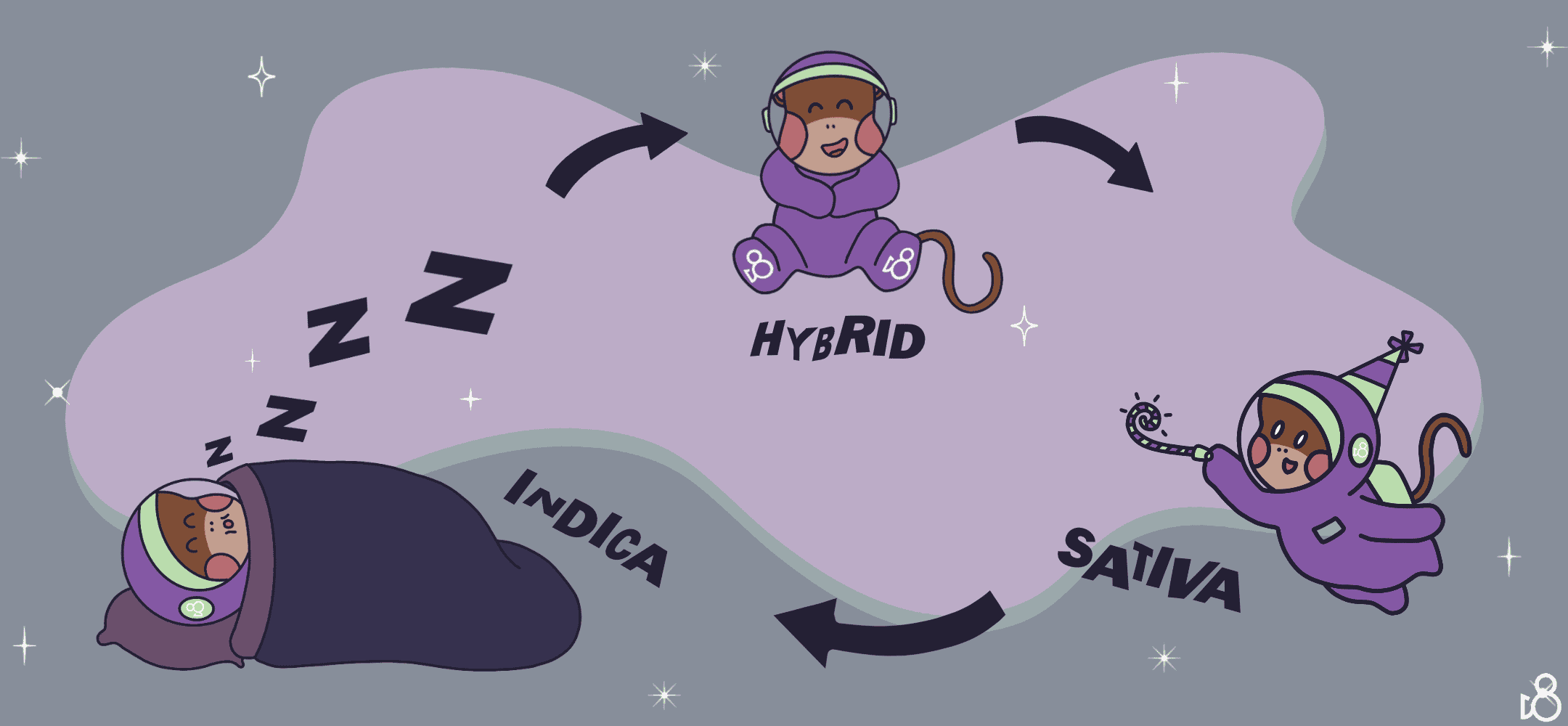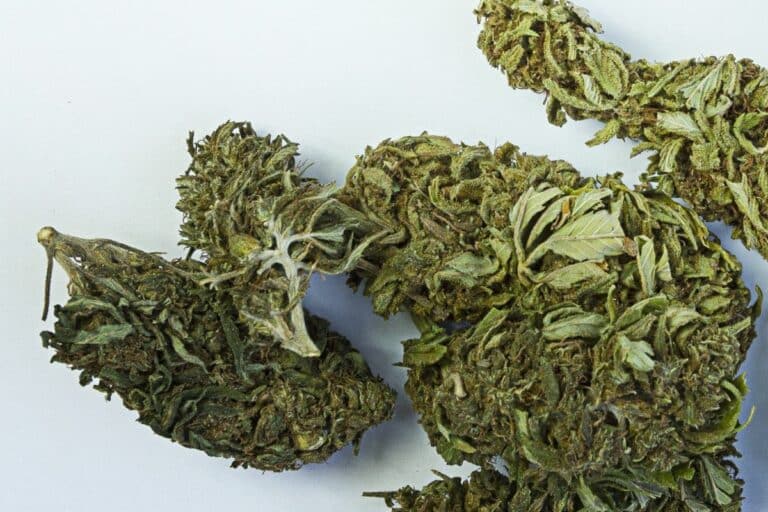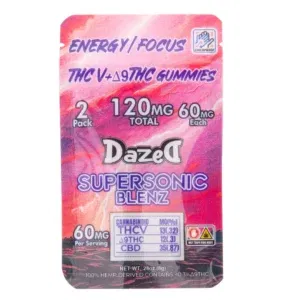Indica vs Sativa vs Hybrid: Understanding Cannabis Varieties
No matter if you’re a newbie or an old pro, learning the scoop on Cannabis sativa, Cannabis indica, and their hybrid buddies is crucial. Grasping what makes these strains tick can clue you in on the vibe you’ll hitch a ride with. Picking your bud? Knowing if it tilts towards sativa, indica, or hangs right in the balance can tip you off about the kind of headspace and body groove you’re in for. This whole sorting hat trick boils down to how the plant looks, where it loves to sprout, and the typical buzz it brings to the party.
Table of contents
Indica strains are often associated with a body-centric high, promoting relaxation and sleepiness, making them suitable for evening use. Contrarily, sativa strains tend to produce a more cerebral, uplifting effect which can enhance creativity and energy, thus are favored for daytime activities. Hybrids, as a combination of these two, can offer a more balanced effect or lean towards one side of the spectrum, depending on their lineage.
Over time, the crossbreeding of sativa and indica species has resulted in a complex array of hybrids, and while the names indica and sativa remain in common use, the true genetic makeup and effects of these strains can be far more nuanced. Terms like “sativa-dominant” or “indica-dominant” can hint at the effects you might encounter, but the individual constitution of a strain and your personal biochemistry are decisive. Therefore, exploring different strains may be the best way to determine the specific results and benefits for you.
Cannabis Fundamentals
As you explore the world of cannabis, understanding the distinct species and their chemical properties is crucial. This knowledge will enrich your appreciation and guide your choices, whether for medicinal or recreational purposes.
Species and Classification
Cannabis sativa and Cannabis indica are the two primary species that you’ll encounter. Cannabis sativa plants are generally taller with thinner leaves and tend to have a more energetic effect. In comparison, Cannabis indica plants are shorter, bushier, and their effects are often described as more relaxing. There’s also Cannabis ruderalis, which is less common and has a lower cannabinoid content.
The modern market has seen a surge in hybrids, which are crossbreeds between these species, designed to enhance specific traits. For instance, indica-dominant hybrids may offer relaxation with a sativa touch for a bit of alertness. Understanding these classifications will support your selection process, aligning it with your desired experiences.
Chemical Compounds
The effects of cannabis are primarily determined by two cannabinoids: THC (tetrahydrocannabinol) and CBD (cannabidiol). THC is known for its psychoactive components, whereas CBD is sought for its non-intoxicating effects that may alleviate conditions like anxiety and pain. Here’s a simple breakdown:
- THC: Psychoactive, gives a “high”
- CBD: Non-psychoactive, with potential therapeutic benefits
Beyond cannabinoids, terpenes also play a significant role in the experience. These aromatic compounds influence the scent and may also have individual effects on stress relief, anxiety, and other conditions.
Knowing the balance of THC and CBD, along with the terpene profiles within cannabis sativa, cannabis indica, and their hybrids, allows you to anticipate the effects more accurately. This knowledge is a cornerstone for both newcomers and connoisseurs alike in navigating the complexity of cannabis.
Understanding Sativa

When you explore the world of cannabis, sativa strains stand out for their particular characteristics and cognitive-boosting effects. They are traditionally associated with a cerebral high that enhances your energy and creativity.
Characteristics of Sativa Strains
Sativa plants typically grow tall and thin with narrow leaves. The color is often a lighter shade of green compared to their indica counterparts. They originate from countries located near the equator, such as Colombia, Mexico, and Thailand, which contributes to their unique growth pattern and properties.
Cultivation Time:
- Longer flowering time compared to indicas
- Prefer a warm climate with long summers
Physical Appearance:
- Tall stature, often above 12 feet
- Narrow leaves, lighter green hue
Effects and Uses
Sativa strains are well-known for their cerebral effects, which can be characterized as uplifting and euphoric. They are often chosen for daytime use due to their stimulating impact that can boost your mood and may enhance creativity.
- Energy: You may feel more energetic and alert.
- Uplifting: Many users report a sense of well-being and optimism.
- Euphoria: Some sativa strains can induce feelings of euphoria.
- Creativity: They might aid in creative work by boosting thought flow.
- Cerebral high: The high is more focused on the mind than the body.
These effects can vary from person to person and depend on many factors such as the specific strain and individual tolerance. Sativa-dominant hybrids may also provide a balance between the energizing effects of sativa and the calming effects of indica.
Exploring Indica
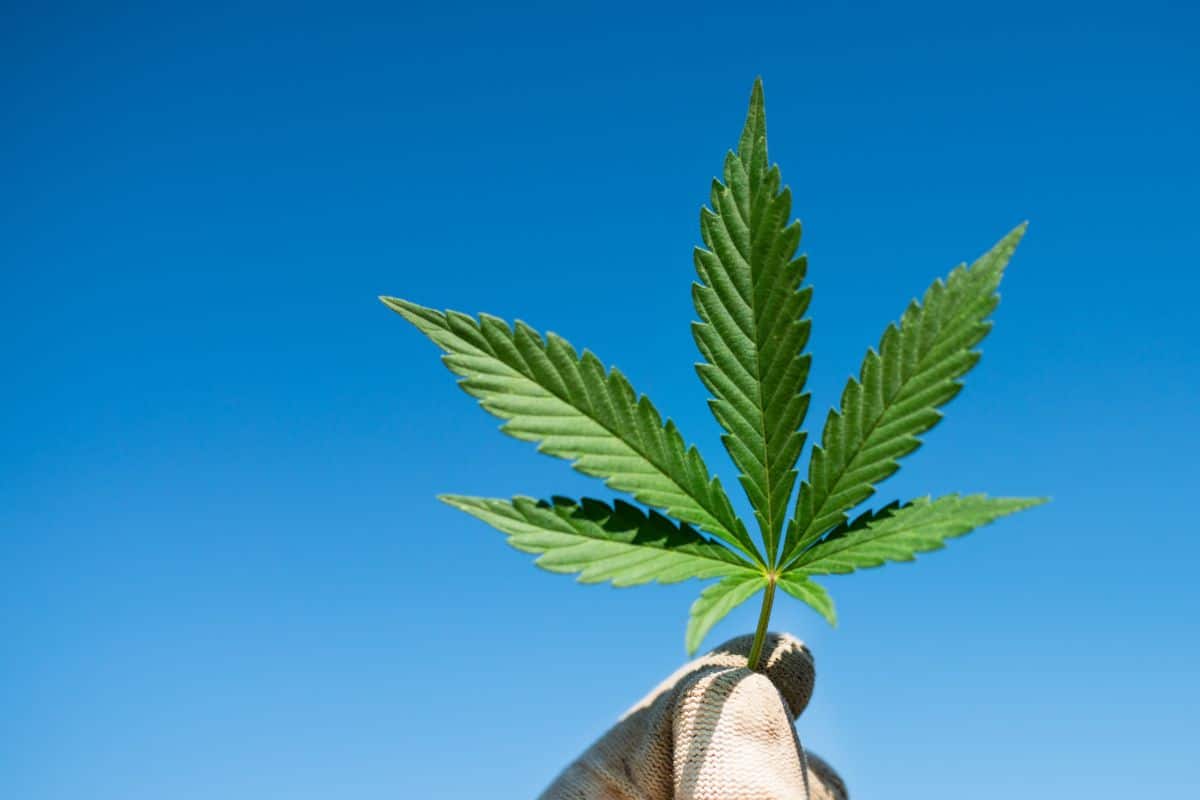
When you delve into the world of cannabis, Indica strains stand out for their distinct physical characteristics and the relaxing effects they typically produce. Here’s a closer look at what sets Indica varieties apart.
Characteristics of Indica Strains
Indica strains are known for their stout stature and broad leaves, contrasting with the taller and slimmer profile of their Sativa counterparts. You can generally identify an Indica plant by its shorter growth cycle and dense buds, making it well-suited for colder climates with shorter growing seasons. These physical attributes contribute to Indica’s recognizability and popularity among cultivators.
- Growth Habit: Short and bushy
- Leaf Shape: Broadleaf
- Flowering Time: Shorter (around 8 weeks)
- Bud Structure: Dense and sticky
Effects and Uses
Indica strains typically produce effects that are relaxing and sedative in nature, often described as a “body high.” If you’re seeking a strain likely to help with relaxation or encourage sleep, Indica might be your preferred choice. Many users turn to these strains in the evening or at nighttime to wind down due to their potential to foster a sense of calm.
These strains are also frequently chosen by individuals looking to alleviate discomfort, as the soothing effects may extend into physical relaxation. For those with insomnia, Indica’s sleep-inducing properties can be particularly beneficial, making it a common recommendation for sleep support.
- Common Effects:
- Relaxation
- Sleepiness
- Body High
- Potential Uses:
- Nighttime use
- Relaxation aid
- Insomnia relief
Keep in mind that everyone’s experience with cannabis can vary, and the intensity of effects depends on numerous factors including the specific strain and individual tolerance.
Hybrid Strains Overview
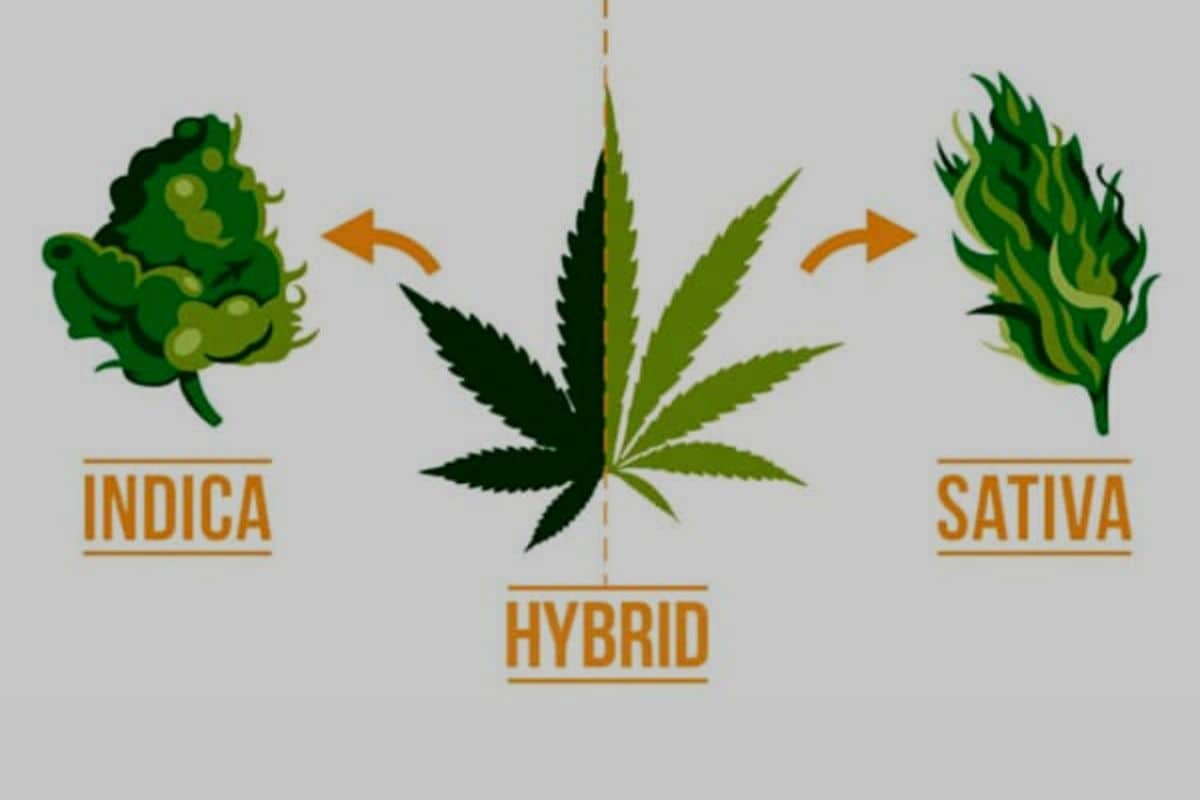
Hybrid strains are specifically bred from both indica and sativa plants to elicit desired characteristics and effects. These cultivars are developed to offer a balanced range of effects that cater to a wide array of preferences and needs.
Characteristics of Hybrid Strains
Hybrid strains typically present a mix of traits inherited from their parent plants, indica and sativa. The physical appearance of hybrids can greatly vary, but they tend to have a balanced growth structure, offering a middle ground between the tall and sparse sativa plants and the short, bushy indica plants. When it comes to the cannabinoid content, hybrids often contain a balanced THC-to-CBD ratio, although some may lean towards either a higher THC or CBD concentration, depending on the desired outcome.
Effects and Uses
The effects induced by hybrid strains are diverse, primarily because breeders can influence the outcome by adjusting the genetic contributions of the sativa and indica parents. Hybrids can produce energizing effects, much like sativa strains, or offer more relaxing properties akin to indica varieties. This versatility makes hybrid strains particularly appealing for medical users looking for specific therapeutic benefits. For instance, a balanced hybrid may alleviate stress without intense sedation or boost energy without excessive stimulation.
Remember, although hybrids often aim to provide the “best of both worlds,” responses can be highly individual, and finding the right hybrid for your needs may require some experimentation.
Comparative Analysis

When exploring the differences between indica, sativa, and hybrids, it’s important to understand their distinct genetic profiles and effects on your body and mind.
Indica vs Sativa vs Hybrid
Indica strains are typically associated with a body-high, providing a relaxing and often sedating effect. They can increase appetite and reduce anxiety, making them suitable for evening use.
Sativa strains are known for a cerebral high, offering an uplifting and energetic experience. They are often chosen to alleviate depression and boost creativity, suitable for daytime use.
Hybrids combine traits from both indica and sativa strains. Depending on their lineage, they can produce a balanced effect that alleviates pain without excessive sedation or an energetic buzz with a calming undercurrent.
Therapeutic and Recreational Use
With therapeutic use, you want to look for strains that target your symptoms effectively. CBD-dominant strains might reduce anxiety and pain with fewer psychoactive effects, whereas THC-dominant strains might be more effective for appetite stimulation and deep relaxation.
Recreationally, you might choose sativa to enhance social activities and energy or indica to unwind after a long day. Hybrids offer a middle ground, adaptable to your social and personal needs.
Consumption and Products
When it comes to Cannabis sativa, Cannabis indica, or hybrid varieties, the way you consume them and the specific products you choose will impact your experience. Different forms of cannabis are tailored to recreational or medical purposes, and the right strain can influence both the effects and benefits you receive.
Different Forms of Cannabis
Cannabis comes in many forms, and which one you choose depends on your personal preference and potentially the advice of a dispensary professional. The most recognized form is the flower, which can be smoked through various methods like joints, pipes, or water pipes. Inhaling the smoke delivers the active compounds swiftly into your bloodstream.
- Edibles: These are foods infused with cannabis and are a smoke-free option. The onset of effects is slower, but they are longer-lasting.
- Tinctures: Cannabis-infused liquids taken sublingually (under the tongue) for a quick onset without smoking.
- Topicals: Cannabis-infused creams and balms for localized relief, not psychoactive effects.
Choosing the Right Strain
Indica strains are typically associated with relaxation and sedative effects, often recommended for nighttime use. On the other hand, Sativa strains are said to be more energizing, suitable for daytime consumption. Hybrids aim to offer a balance between the two. When choosing a strain from a dispensary, consider:
- The purpose of consumption: recreational or medical.
- Your desired effects: Do you want to feel relaxed or energized?
- The advice of professionals: A knowledgeable dispensary representative can guide you toward the strain and product that suit your needs.
Your choice is also influenced by the consumer experience level and the product’s availability and legal status. Always comply with local laws regarding cannabis consumption.
Cultivation and Origins

When exploring the distinctions and similarities between Cannabis sativa, Cannabis indica, and their various hybrid forms, understanding their geographical roots and cultivation methods is essential. The history of these plants is as rich and varied as the strains themselves.
Geographical Origins
Cannabis sativa is believed to have originated in Eastern Asia, particularly in regions that are now part of Southeast Asia. It has a long history of cultivation in this area due to its utility for seeds, oil, and fiber. As trade and colonization spread, so did the distribution of Cannabis sativa, reaching Africa and Central America.
Cannabis indica, on the other hand, is traditionally associated with the Indian subcontinent and is thought to have grown in the Hindu Kush mountain range, which extends across Afghanistan and into northern Pakistan. Its use was documented in historical texts for medicinal and cultural practices in this region.
Cultivation Techniques
Cannabis cultivation techniques vary according to the plant species and the geographical location where they’re grown:
- Cannabis sativa: It thrives in equatorial climates, characterized by long growing seasons with high humidity. Cultivators in these areas often utilize the plant’s height, allowing it to grow tall and use vertical space efficiently.
- Cannabis indica: This plant prefers the more arid and mountainous climate of the Hindu Kush region. Their cultivation has adapted to the harsh, dry climate by developing shorter and bushier plants, which are better suited to the environmental conditions found in these areas.
Over time, both Cannabis sativa and Cannabis indica have been selectively bred for particular traits such as potency, aroma, or growth characteristics, leading to a multitude of hybrid strains that combine attributes from both parent varieties.
Terpenes and Flavors
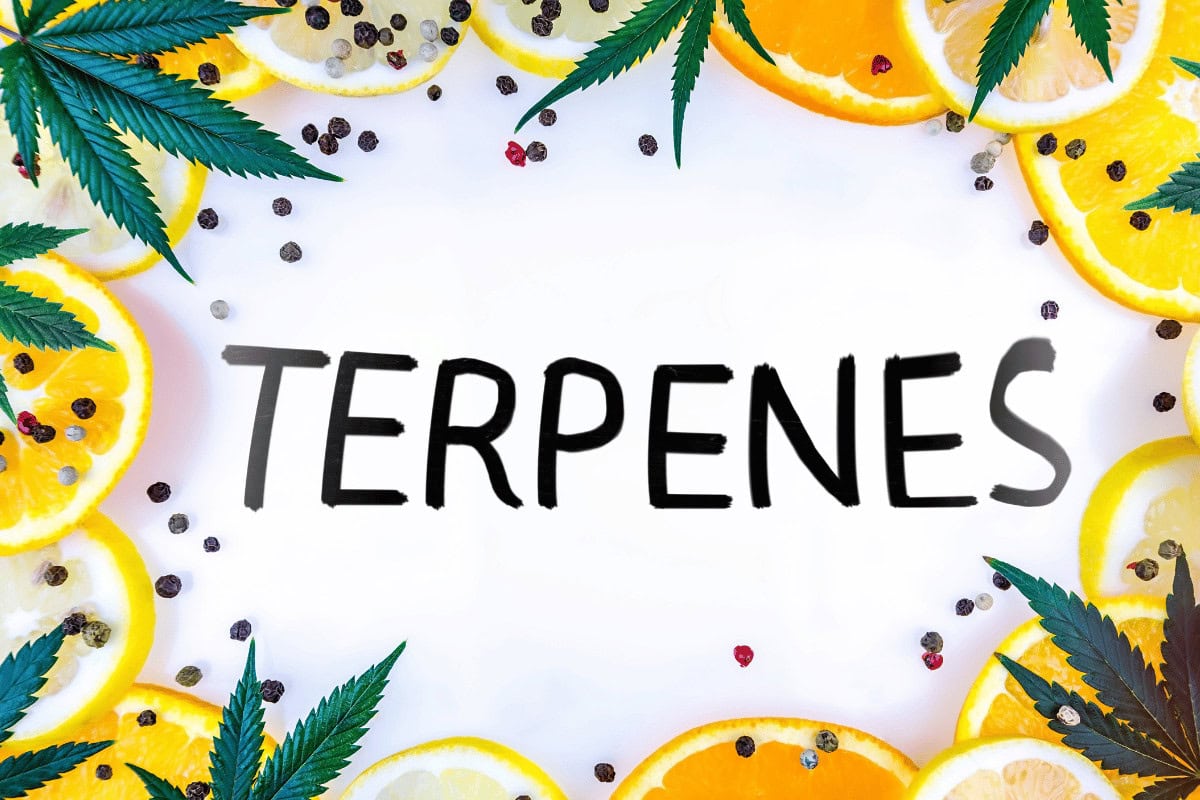
Your cannabis experience is greatly influenced by the plant’s terpenes, which are aromatic compounds responsible for the nuanced flavors and smells ranging from citrus to pine. These terpenes go beyond sensory appeal; they can also affect the effects you feel.
Understanding Terpenes
Terpenes are organic compounds found in various plants, but they are particularly significant in cannabis. They are secreted from the same glands that produce cannabinoids like THC and CBD and contribute to the plant’s flavor, aroma, and therapeutic properties. When you inhale cannabis, terpenes interact with your body’s endocannabinoid system, potentially influencing your experience.
- Myrcene: This is perhaps the most common terpene in cannabis plants and is known for its earthy, musky notes, similar to cloves. It’s also found in high amounts in mangos and is believed to produce relaxing effects.
- Limonene: As the name suggests, this terpene imparts a citrusy aroma and is commonly found in fruit rinds. Limonene is associated with uplifting and stress-relieving effects.
- Caryophyllene: Found in black pepper, caryophyllene has a spicy, peppery scent and is the only terpene known to act as a cannabinoid, potentially providing anti-inflammatory effects.
- Pinene: Pinene has a sharp, sweet pine aroma and is believed to increase alertness and memory retention.
Common Terpene Profiles
The terpene profile of a cannabis plant influences its categorization as Indica, Sativa, or Hybrid. These profiles have a significant impact on the strains’ purported effects and are a crucial factor in your decision-making process.
Indica strains often have higher levels of myrcene, which could be partially why they are commonly associated with more sedative effects. On the contrary, Sativa strains typically have higher levels of pinene or limonene, aligning with their reputation for being more energizing. Hybrids combine attributes from both Indica and Sativa plants, often possessing a more balanced or complex terpene profile.
For example, a strain with a dominant citrus smell is likely high in limonene, which might be suggested for someone seeking a mood lift. Conversely, a strain emitting a strong pine scent can indicate a high pinene content and might be chosen by someone looking for increased focus.
Understanding these terpenes can help you predict the flavor and potential effects of a strain. By noticing the aromas and tastes, you can better navigate the diverse world of cannabis and find the profile that meets your preferences and needs.
Industry Insights
Within the cannabis industry, your understanding of the different strains and their production is crucial for grasping the market dynamics.
Commercial Production
In commercial production, cannabis strains are categorized mainly into Indica, Sativa, and Hybrid varieties. Each type offers distinct growth patterns, yields, and flowering times, which are key considerations when cultivating. Indica strains, for example, typically grow shorter and bushier and are known for faster flowering times, making them suitable for indoor growing environments. On the other hand, Sativa strains favor warm climates with long seasons due to their tall stature and long flowering periods. Hybrids are bred from both Indica and Sativa strains and can exhibit a wide range of characteristics from both parent varieties.
- Indica: Shorter, faster flowering; suited for indoor grows.
- Sativa: Taller, longer flowering; suited for outdoor grows with warm climates.
- Hybrid: Combinations of Indica and Sativa traits; variable growth requirements.
Legal and Economic Factors
The legal landscape surrounding cannabis directly affects the economic factors of production, distribution, and sale. Laws differ vastly by region, influencing how strains are cultivated and sold. For example, in California, the prominence of dispensaries and legal status creates a high demand for various strains. The THC content in herbal products can influence both price and consumer preference, affecting how growers decide on which strains to focus. Economic considerations also extend to branding, as the distinction between Indica vs. Sativa can impact marketing strategies. However, with the rise in genomic understanding of cannabis, the industry might shift toward more precise classification systems, potentially affecting current Indica and Sativa branding practices.
- Legal Status: Varies by region affecting cultivation, sale, and THC regulations.
- Economic Impact: Influences demand, price, and marketing strategies specific to cannabis strains.
Side Effects and Safety
When you choose between indica, sativa, and hybrid cannabis strains, it’s important to consider how they might affect your safety and comfort. Different strains can have varying levels of THC content, which may lead to different side effects and intoxicating effects.
Potential Risks
Indica strains generally have a higher CBD to THC ratio, which tend to produce less intoxicating effects, but they can still cause side effects like drowsiness or a dry mouth. Conversely, sativa strains typically have a higher THC content, which can be more intoxicating and might lead to increased anxiety in some users. Hybrid strains, being a mix of indica and sativa genetics, can fall anywhere on the spectrum, making it essential to consider their individual THC to CBD ratios.
Managing Side Effects
To manage potential negative side effects, start with a low dose, especially if a strain has a high THC content, as THC is the primary intoxicating component. Staying hydrated can help with dry mouth, a common side effect. If you experience anxiety with certain strains, consider switching to a strain with a higher CBD content, or reduce the amount consumed. Always use cannabis responsibly and within your personal comfort levels.
Scientific Research

In exploring the nuances of cannabis and its various strains, scientific studies offer insights into the specific effects and therapeutic potentials of Sativa, Indica, and hybrid varieties. Research has increasingly focused on the components such as tetrahydrocannabinol (THC), cannabidiol (CBD), and cannabinol (CBN), and how they influence the plant’s impact on users.
Studies on Cannabis Effects
Current research demonstrates that the effects of cannabis depend significantly on the presence and ratios of cannabinoids like THC and CBD. THC, being the primary psychoactive compound, is responsible for the ‘high’ associated with cannabis use. On the other hand, CBD is valued for its potential therapeutic effects, which might include analgesic and anti-inflammatory properties. Studies comparing Cannabis sativa and Cannabis indica strains suggest that while Sativa may offer more energizing effects, Indica strains could be associated with more sedative outcomes, although there’s ongoing debate about the consistency of these effects within the strains.
- Sativa strains are often rich in THC, typically leading to more stimulating or euphoric experiences.
- Indica strains usually have a higher CBD to THC ratio, potentially offering more calming effects.
Emerging Discoveries
As the science of cannabis progresses, new discoveries keep surfacing. Researchers have identified that beyond THC and CBD, other compounds like minor cannabinoids and terpenes also play critical roles in the overall effects of cannabis. For instance, the presence of CBN in aged cannabis or particular hybrids may contribute to the sedative qualities of some strains.
Moreover, advanced breeding techniques have led to the development of hybrids, which aim to blend the favorable characteristics of Sativa and Indica plants to achieve specific therapeutic outcomes. Such hybrids are sometimes labeled as ‘Sativa-dominant’ or ‘Indica-dominant’ based on their expressed traits.
- Hybrids can combine traits, creating a spectrum of effects ranging from stimulating to relaxing.
Frequently Asked Questions
When exploring the cannabis world, you will encounter a range of effects and uses associated with Sativa-dominant, Indica-dominant, and Hybrid strains. Understanding these can help you make more informed decisions for your needs.
What are the defining effects of Sativa-dominant strains compared to other types?
Sativa-dominant strains typically offer a cerebral high that can stimulate creativity and energy. This contrasts with Indica-dominant effects, which commonly induce relaxation and sleepiness.
How do the effects of Sativa, Indica, and Hybrid strains differ?
Sativa strains generally produce an uplifted, energetic effect, while Indica strains are known for their relaxing and sedative properties. Hybrid strains, depending on their lineage, can offer a balance between the two.
Which is generally considered more potent: Sativa or Indica strains?
Potency cannot be solely attributed to whether a cannabis strain is Sativa or Indica. The potency is determined more by the THC and CBD content than the strain type.
In what ways do users report the highs from Indica, Sativa, and Hybrid strains as being different?
Users report that Indica strains often lead to a “body high” that is relaxing and sedative. In contrast, Sativa strains tend to result in a “head high,” providing an energizing effect. Hybrids can produce varied effects, influenced by their specific combination of Sativa and Indica genetics.
What are the typical effects associated with Indica strains?
The typical effects associated with Indica strains include full-body relaxation, drowsiness, and potential pain relief. Indica strains are often favored for nighttime use due to these sedating qualities.
Which type of strain, Indica, Sativa, or Hybrid, is usually preferred for specific effects?
For energy and mental alertness, a Sativa-dominant strain is typically preferred. For relaxation and help with sleep, an Indica strain is favorable. Hybrids can offer a more tailored balance and are preferred when specific effects from both Sativa and Indica strains are desired.

